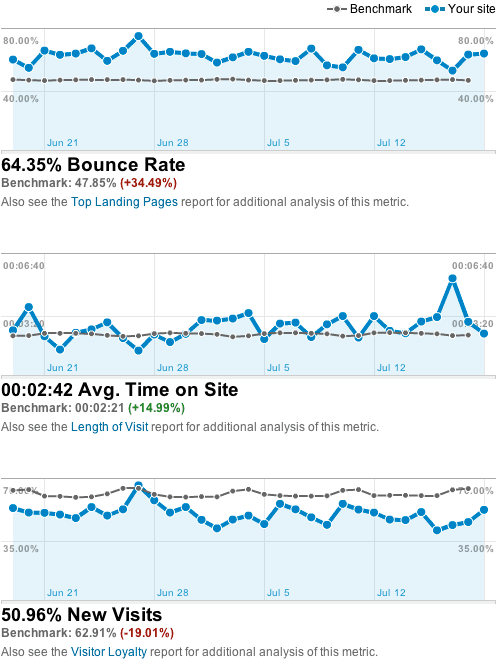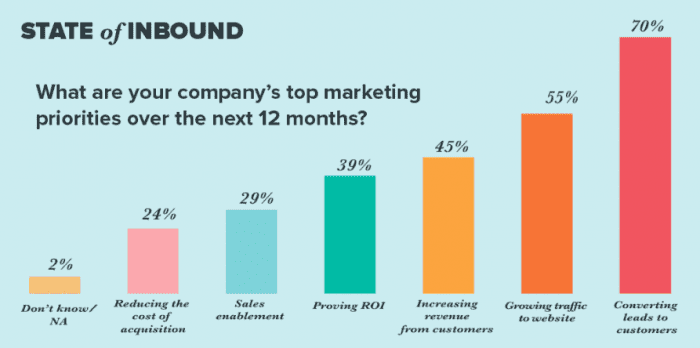How to generate better sales leads that lead to conversion
Many B2B sales organizations get bogged down with too many bad sales leads. Salespeople are often crying out for “more sales leads” but “more” is not always better! Instead of just indiscriminately dumping more and more leads into the top of your sales funnel, you need to think more carefully about what a “good” sales lead really looks like for your company. Too many “bad” sales leads are sometimes worse than having no sales leads at all – because they cause your sales team to waste time chasing after buyers who aren’t truly the right fit or who aren’t anywhere close to being ready to buy.

Here are a few common root causes of the "bad leads" problem, and how to address it:
1. Your website is too vague
Most B2B sales companies are constantly preoccupied with getting “more traffic” to their website – but what happens with the new visitors to your website once they arrive? Your website should not just serve as a simple landing page that encourages prospects to call or email; your website needs to open up a larger and more detailed conversation. If, after spending time on your website, your new sales leads don't know what you offer or why it's important to them, not only will you not get many leads, but the inbound sales leads who do contact you will be low-quality and poorly informed.
Evaluate your site’s bounce rate, duration of average visit, and other benchmarks for how successful your site is at engaging your prospects.

You need to use your website as a client education machine! Educate your prospect upfront - assume that they're doing research. Assume that they’re going to be going in-depth on everything important about your solution – features, implementation, case studies, pricing, and more.
Anticipate questions and answer them on your site. Don’t be afraid to create your site content in a way that “weeds out” bad sales leads in advance – for example, you could include a pre-qualifying questionnaire on your website that asks prospects to answer a few upfront questions before they send an inquiry via email. If you’re getting too many bad sales leads, you might need to adjust the “flow” of leads from your website a bit – by adding a bit more of a hurdle for prospects to overcome before they contact you.
Make sure that the prospects that contact you for the first time after visiting your website have truly read about your solution and are well-informed enough about your offerings to be ready to have a good conversation – your website needs to be specifically detailed enough and thorough enough to act as a pre-qualifier for your sales leads.
2. Casting too wide of a net
Another mistake that many B2B organizations make is to assume that they can sell to absolutely everybody – according to research statistics cited by Hubspot, only 22% of businesses are satisfied with their conversion rates, and for every $92 spent on acquiring customers, only $1 is spent on converting them. But the truth is, your solution is not for everyone! Do you know which leads are truly the best fit for your business? Make a strategic evaluation ahead of time - figure out which types of customers are truly best suited for you and then go find them.
If you try to sell to anyone and everyone, you will get too many bad leads. Find a narrower niche instead. Instead of spending more money chasing new leads, spend more time and effort honing in on exactly which leads are most likely to be a good fit and likely to convert.

For example, let’s say you sell a software solution that can help companies improve productivity. You might want to sell to enterprise customers, but you might not have the right contacts or scale to be the right fit for such large companies. Instead, you could target small-to-medium size companies (SMEs), or you could segment your customers even further by targeting certain industries or categories of companies. The more specific you can make your niche, the more successful you will be at prospecting – because you can have a more compelling story to tell to your prospective customers about why they should want to talk with you.
If you’re trying to sell to anyone and everyone under the sun, you’re really targeting “no one” – because your target is so big, it might as well not exist. Strategically segmenting and targeting your customer base will help you clarify your own thinking about who and what your solution is really for – instead of “everyone,” you will have a more powerful idea of who the specific “someones” are that really need and will want to hear about your solution.
3. Overly aggressive prospecting
In keeping with the theme of “more is not always better” – sometimes “more cold calls” does not always lead to better results. I hear horror stories all the time in my industry from companies that got a bunch of sales leads from cold-calling, only to find out that none of the leads were actually well qualified.
How does this happen? Sometimes if you push too hard during those initial cold calls to get prospects to agree to a follow-up sales call or product demo, you might get prospects who just tentatively or halfheartedly agree to that second contact. But then when you follow up with that second call or demo appointment, you discover that the prospects aren’t actually interested.
In fact, if your cold calling is too aggressive or hasty, or is not thorough enough, you might even discover that some of your prospects don’t remember hearing from you, or are annoyed to hear from you, because they never actually agreed to receive a follow-up call or they didn’t fully understand what they were agreeing to.
Your prospecting needs to be focused and targeted. Patience is a virtue. Don’t accidentally poison the well with your own future customers by doing your upfront prospecting the wrong way. What to do instead? Use every cold call as an opportunity to build relationships and establish trust. Ask pre-qualifying questions up front, such as, “What issues are you having with your current solution” and “How are these issues affecting your overall business operations?” Learn more about the prospect’s overall operational issues so you can start to figure out whether/how they are a good fit for what you sell.
Learning more about your sales leads is part of a larger process of long-term lead nurturing. You need to be ready to build relationships with your buyers over time; the patient lead nurturing approach pays off! According to stats cited by Hubspot, nurtured leads produce an average 20% increase in sales compared to non-nurtured leads, and 67% of B2B companies see at least a 10% increase in sales opportunities with lead nurturing with 15% seeing a sales increase of 30% or more. Investing in lead generation is just one part of the process – you also need to be prepared to invest some additional time in lead nurturing: learning about your prospects, answering their questions, building relationships, and establishing trust.
Bad sales leads are part of the sales process – not every lead is equally ready to buy, not every prospect is equally qualified or equally as good of a fit for what you sell. But if your sales funnel is getting cluttered with too many bad leads, you are running the risk of wasting too much time chasing bad leads while missing out on good, legitimate sales opportunities. Start early to weed out the bad leads and focus ever more intently on the good prospects that are the right fit for your solution. Sales is not just about closing deals, it’s about doing the patient, painstaking work on the front end of the sales process to identify, target and build relationships with the right prospects at the right time.

Thanks to Gregg Schwartz for sharing their advice and opinion in this post. Gregg is the Director of Sales at
Strategic Sales and Marketing, an industry-founding lead generation company based in Connecticut. He helps B2B sales organizations generate major account B2B sales leads and improve their sales processes with consulting and training.






 Thanks to Gregg Schwartz for sharing their advice and opinion in this post. Gregg is the Director of Sales at
Thanks to Gregg Schwartz for sharing their advice and opinion in this post. Gregg is the Director of Sales at 



